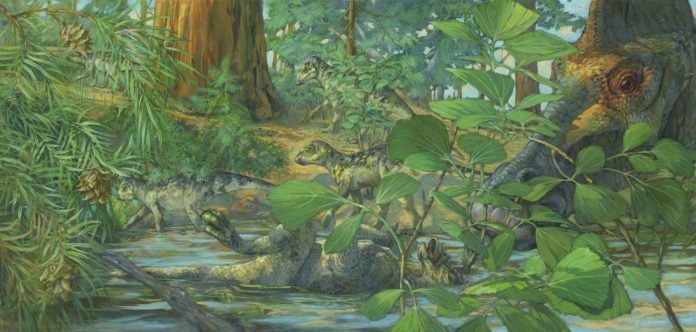Scientists from the Institute of Vertebrate Paleontology and Paleoanthropology of the Chinese Academy of Sciences (CAS), and Mary Schweitzer, of North Carolina State University in the United States, have discovered evidence of fossilized cell nuclei and chromosomes within preserved cartilage of baby duck-billed dinosaurs, dating back 75 million years.
Scientists discovered dinosaur fossils found in northwest Montana. After the analysis, scientists found that the dinosaur belongs to the genus Hypacrosaurus, and comes from a nesting ground in Late Cretaceous sediments.
In 1988, American paleontologist Jack Horner became famous, providing the evidence that some dinosaurs cared for their young.

Scientists, in this study, conducted microscopic analyses of skull fragments from these nestling dinosaurs. In one part, she saw some exquisitely protected cells inside calcified cartilage on the edges of a bone. Two cartilage cells were as yet connected by an intercellular bridge, morphologically predictable with the end of cell division.
Alida Bailleul, of the Institute of Vertebrate Paleontology and Paleoanthropology of the Chinese Academy of Sciences (CAS), said, “Internally, dark material resembling a cell nucleus was also visible. One cartilage cell preserved dark elongated structures morphologically consistent with chromosomes. I couldn’t believe it – my heart almost stopped beating.”
Scientists next determined regardless of whether original molecules were additionally preserved in the dinosaur cartilage. The team performed immunological and histochemical investigations on the skull of another nestling Hypacrosaurus from the same nesting ground. The immunological test supports the presence of remnants of original cartilaginous proteins in this dinosaur.
Scientists also isolated individual Hypacrosaurus cartilage cells and applied two DNA stains, DAPI and PI. These binds specifically to DNA fragments in existing material, and some of the isolated dinosaur cells showed internal, positive binding in the same pattern seen in modern cells, suggesting some original dinosaur DNA may be preserved.
Bailleul said, “These new, exciting results add to growing evidence that cells and some of their biomolecules can persist for a long time. They suggest DNA can be preserved for tens of millions of years, and we hope this study will encourage scientists working on ancient DNA to push current limits and use new methodology to reveal all the unknown molecular secrets that ancient tissues have.”
The findings of the research team were recently published in the National Science Review.
